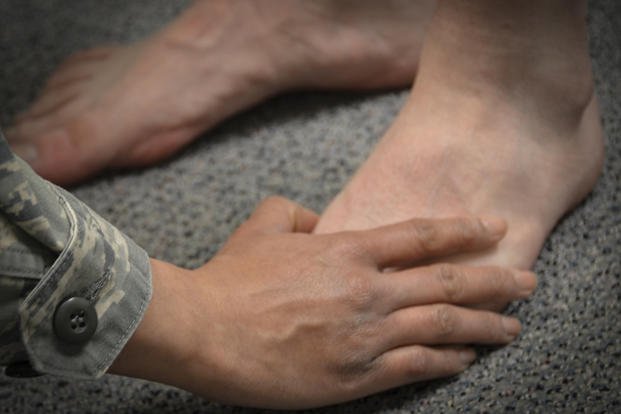Every year, after a few months of decreased running due to winter weather, I receive emails from people who are starting to ache after only a few days of running. Typically, if you take off for more than 2-3 months from a regular running routine, chances are when you start again, you will start "where you left off" and overtrain. Basically, you are running too far, too soon. It takes time to build up to a rigorous amount of running (4-6 miles a day, 4-5 times a week), even if you used to run this far in the fall of last year.
There is a link I refer many people to who complain of leg injuries. I have had many of these injuries, but since I am not a doctor, I like for people to be better informed through DrPribut.com. Steven Pribut enjoys running and has a site designed to help describe, prevent and self-treat the most common running injuries. Click the links below to see what Pribut has to say about running and injury prevention. The types of injuries that are most common to new runners (and the ones that I receive questions on) are:
- Shin sprints
- Heel injuries (plantar fasciitis)
- ITB syndrome
- Runner's knee (PFS)
- Achilles' tendinitis
If you are an avid runner, chances are that you have experienced at least one of these injuries. According to Runner's World, more than 50% of all runners get injured every year.
Now, in the spring (after a winter layoff) or if you are wishing to start running for the first time, I would recommend the following "step-up program."
1. Stretch for a week first to loosen up stiff joints and connective tissue.
2. Choose non-impact aerobic activity like biking, elliptical gliding, rowing or swimming to do when injuries are first felt. It is never a bad idea to cross-train in any of these activities every other day in place a running.
3. Warm up properly, then stretch. Run nice and easy for about 5-10 minutes, then stretch once you are warm and the muscles and joints are more pliable. Never stretch "cold." See stretches in the "Six-Week Running Program."
4. Replace running shoes often. I go through shoes about every 2-3 months and only run in my running shoes. Do not walk in your running shoes since you walk differently than you run.
You get what you pay for, too. There are a number of types of shoes out there that range from $80-$120 for the better brands; however, you can save $20-$30 by going to retailers such as BodynSoleSports.com. This site also has information of gait analysis and the importance of orthotics (shoe insets) to help prevent injuries.
5. Update on running barefoot: From an Army soldier/runner: "Recently in an Air Force Times article, they previewed a soldier and Marine that had had all the injuries you mention in your article and had given up on running until they discovered barefoot running. This got me thinking, and I bought a pair of Vibram Five Fingers to try to transition into and let me tell you what a world of difference it has made on my life. Previously running, I could only muster four miles as my all-time longest run and that was in Iraq. After only two months of running virtually barefoot, I'm up to five miles four times a week with a high of over eight. I am actually loving running again. I actually have a goal for the summer to run a half marathon here in North Pole, Alaska, and my next assignment [is] trying to do a full marathon." Hey, there are other options out there.
6. Myofascial release with foam roller: This has helped to relieve post-running soreness.
I hope these links can help you prevent some common injuries. However, it is always recommended to see a doctor if you are in pain. Two of the running rules I use are: "If it hurts to run, stop running," and "If it hurts to walk, do not run and go to a doctor."
Stew Smith is a former Navy SEAL and fitness author certified as a Strength and Conditioning Specialist (CSCS) with the National Strength and Conditioning Association. Visit his Fitness eBook store if you’re looking to start a workout program to create a healthy lifestyle. Send your fitness questions to stew@stewsmith.com.
Want to Learn More About Military Life?
Whether you're thinking of joining the military, looking for fitness and basic training tips, or keeping up with military life and benefits, Military.com has you covered. Subscribe to Military.com to have military news, updates and resources delivered directly to your inbox.




















